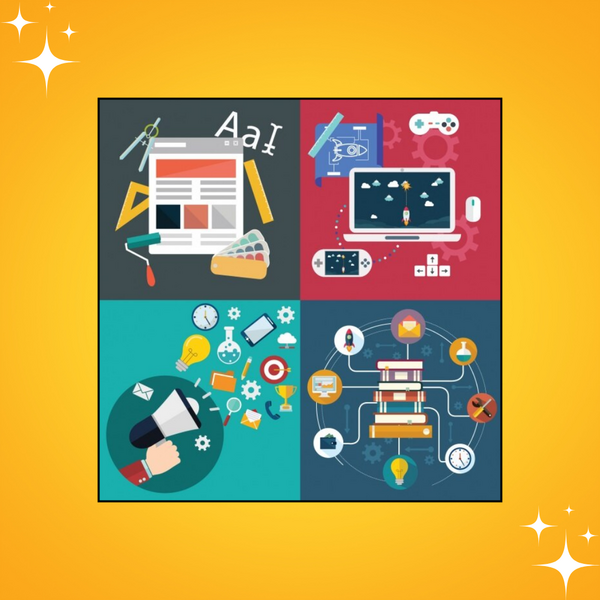ALL BUSINESS
COMIDA
DIRECTORIES
ENTERTAINMENT
FINER THINGS
FREE CREATOR TOOLS
HEALTH
MARKETPLACE
MEMBER's ONLY
MONEY MATTER$
MOTIVATIONAL
NEWS & WEATHER
TECHNOLOGIA
TV NETWORKS
VIDEOS
VOTE USA 2026/2028
INVESTOR RELATIONS
ALL BUSINESS
COMIDA
DIRECTORIES
ENTERTAINMENT
FINER THINGS
FREE CREATOR TOOLS
HEALTH
MARKETPLACE
MEMBER's ONLY
MONEY MATTER$
MOTIVATIONAL
NEWS & WEATHER
TECHNOLOGIA
TV NETWORKS
VIDEOS
VOTE USA 2026/2028
INVESTOR RELATIONS
Posted by - icon fair -
on - 12 hours ago -
Filed in - Technology -
web development icon fair fair icon flat icons vector icons icon design -
37 Views - 0 Comments - 0 Likes - 0 Reviews

In the web design world, first impressions matter. A website that is designed well can draw a visitor in, make him or her feel comfortable, and guide him or her through a seamless user experience (UX). One of the most important elements of design to achieve this is iconography. Icons are much more than just simple decorations; they are visual clues that enhance communication, streamline navigation, and give a website an overall better feel.
In this article, we'll be talking about how the effectiveness of iconography can revamp a website's design and function via a case study. We'll be discussing the role icons play in increasing user experience, brand recognition, and making content more engaging. We will also outline the methods on how you can employ high-quality, customizable icons from Iconfair to enhance your web design.
Icons are small but mighty. They serve as shortcuts to information and actions, helping users navigate websites and apps with ease. Icons simplify complex tasks, make content scannable, and guide users to important actions. In fact, research shows that people are more likely to engage with content when it is visually appealing and easy to understand. Icons are an integral part of this equation.
The use of iconography can:
- Make it more usable by showing information instantly.
- Use the visual design that correlates with the structure of the website.
- Make it accessible: A web page that is easy to navigate with different abilities
- Enhance branding, using unique icons that characterize the brand.
Icons have the potential to dramatically improve a website's UX, therefore transiting from an uninspiring digital experience to a working experience that gains people's attention.
Let's use a real-world example to show the power of iconography. We'll take a hypothetical website redesign for an e-commerce marketplace looking to build a great user experience through better icon usage.
The original website had a cluttered interface with very few icons. Important actions, such as adding items to the cart or searching for products, were buried in text-heavy menus. Users often felt overwhelmed, and navigation was cumbersome. Moreover, the brand identity of the website was not clear, as it relied on generic, stock images for design elements.
Enhance the experience of the user: Develop navigation, reduce complexities in tasks, and ensure that the entire design is visually aligned with the personality of the brand. With this in mind, the team decided to use custom iconography for these purposes.
Probably one of the critical problems with the original design is that users did not find where key functions lay, such as adding items to the cart or access to a search feature. The design team addressed this issue by introducing custom icons for commonly performed actions.
In addition, the shopping cart icon was displayed simply and markedly on the header of the website, so that users can see it. This facilitated a clear visual cue for users to add products to their cart and to checkout.
- Search Icon: A magnifying glass icon was placed in the navigation bar to represent the search function. This iconic representation of search is universally understood, making it more intuitive for users to search for products.
By using intuitive and consistent icons, the design team simplified the website’s navigation and helped users quickly locate essential functions.
Icons don't only simplify navigation; they also improve content organization and enhance scannability. In this instance, the website had so many product categories and promotions that made it difficult to scan content.
The design team agreed to implement icons in conjunction with category names and promotional banners. For instance:
- Product Categories: A custom icon was assigned to each product category, such as a laptop for electronics, a shirt for clothing, and a bed for home goods.
- Promotions: Customs icons were utilized to highlight limited-time offers and promotions using custom icons like a "sale tag" or "discount" icon to attract attention and easily stand out.
These visual cues made it easier for users to understand the website’s structure and quickly identify areas of interest, reducing cognitive overload and increasing engagement.
Another interesting use of icons is for the reinforcement of a website's brand. The online shopping company wanted their overall design to be unique and similar to the brand, so the design team came up with custom icons that reflected the playful, modern personality of the company.
- Custom Color Palette: The icons were designed with the brand's color palette to be in perfect sync with the design of the overall website. It added consistency and cohesion to the user interface.
-Icon Style: Rather than using stock icons, the team created unique icons with a particular style, which included rounded edges, simple lines, and minimal details. This style aligned with the brand's modern feel and made the website feel more personalized and polished.
By creating custom icons that reflected the company's branding, the website not only became more functional but also more aligned with its identity, helping build a stronger connection with users.
Accessibility is an often overlooked aspect of web design, but it's critical to ensure that websites are usable by people with different abilities. The redesign team was mindful of accessibility when implementing iconography.
- Alt Text: The team had written descriptive alt text to all icons to make them accessible to screen readers, thus enabling the visually impaired to understand what every icon is for.
- High Contrast: Icons included high contrast, thereby enabling users with low vision to read them better since bright iconic images stood out against dark backdrops.
- Simple and Intuitive Design: The icons were kept simple and easy to understand, which is important for users with cognitive disabilities. A simple heart icon for favorites and a shopping bag for the cart were instantly recognizable and didn't require any explanation.
The thoughtful use of iconography improved the accessibility of the website, making it usable for a wider range of users.
Immediately after implementing the custom icons on the website, the results became apparent:
- Increased Engagement: Users were able to easily navigate the site and quickly recognize key actions to increase engagement and spend more time on the platform.
- Improved Usability: Icons made complex tasks easier, such as finding products or checking out, thus making it a more intuitive user experience.
- Stronger Branding: The custom icons aligned with the website’s playful and modern aesthetic, strengthening the brand’s identity and making the site feel more unique.
- Better Accessibility: The website became more accessible to users with varying abilities, broadening the platform’s reach.
Ultimately, the restyling, integrating effective iconography, made a website more friendly and aesthetically pleasing to the eye. The new icons not only rendered the website much more functional but also helped a brand to bind more closely to its audience.
If you want to take your website design to the next level, incorporating iconography is a great place to start. Here are some practical steps for using icons to improve your site:
Use custom icons that represent your brand. Icons should fit your website's overall style, tone, and aesthetic. You can freely obtain and customize icons at Iconfair in thousands of high quality, scalable designs that can be tailored to your brand.
Icons should be simple and intuitive. Select well-known symbols that the user will instantly recognize and understand. Ensure that your icons are legible and scalable, meaning they work at different sizes.
Icons are a great way to enhance website navigation. Use them in your menus, action buttons, and call-to-action sections to make it easier for users to find and interact with key functions.
Don’t forget to optimize your icons for accessibility. Use high contrast, provide descriptive alt text, and keep icons clear and simple to ensure that your website is usable by everyone.
As with any design element, it’s important to test your icons with real users. Gather feedback, monitor how they interact with the icons, and make improvements based on their behavior.
Iconography is a powerful tool that can significantly transform your website. From simplifying navigation to reinforcing your brand identity, icons enhance the overall user experience and make your website more intuitive, engaging, and accessible.
In the case study above, custom icons have dramatically improved the usability, branding, and functionality of the online shopping platform. You can do the same for your website by following best practices and using high-quality, customizable icons from Iconfair. Whether you are designing a brand-new site or revamping an existing one, iconography is an essential element that should not be overlooked.


